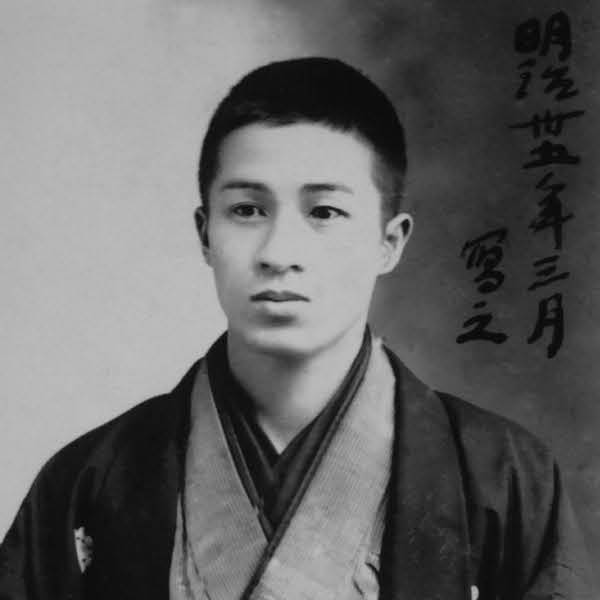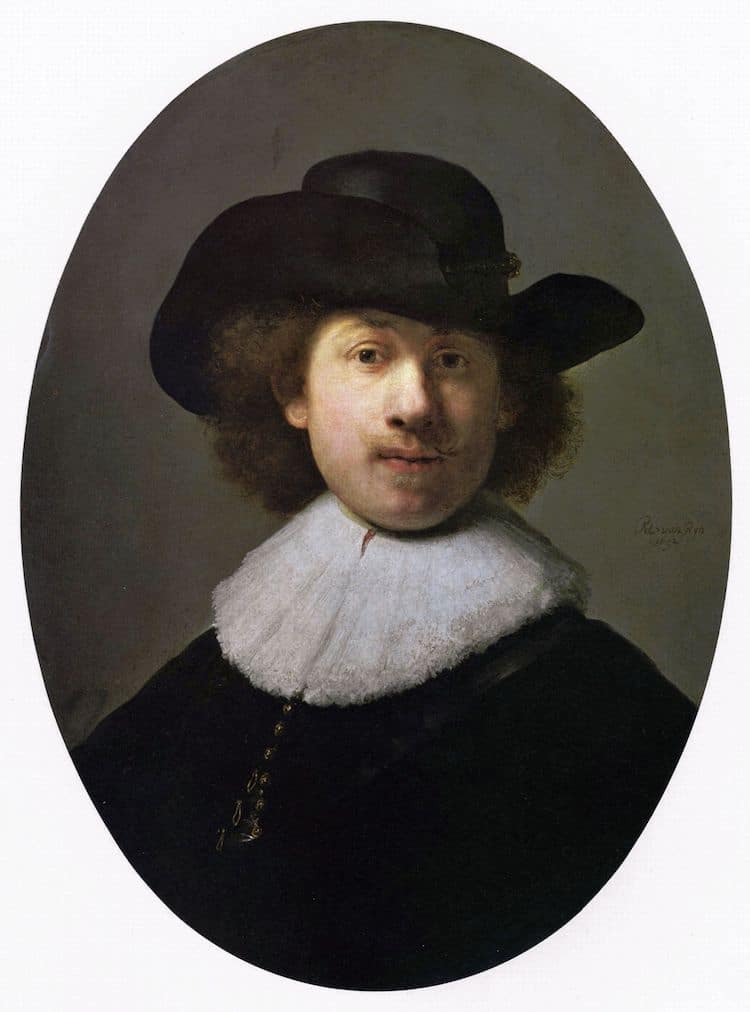
Rembrandt, “Self-Portrait as a Citizen,” 1632 (Photo: Burrell Collection via Wikimedia Commons, Public domain)
Few great artists can boast a diverse portfolio like Rembrandt. Not only did he create some of the most significant group portraits of the Dutch Golden Age like The Night Watch and the Anatomy Lesson of Dr. Nicolaes Tulp, but he also left behind about 80 self-portraits in the form of paintings, etchings, and drawings.
While many preceding artists created significant self-portraits—Albrecht Dürer and Leonardo da Vinci, to name a couple—Rembrandt was the first to use the art form in ways beyond simply recording his own likeness, and he was the first to make numerous self-portraits throughout his lifetime. He used his face to create tronies—paintings that are made to study facial expressions and people in different costumes—and to examine himself as he aged from a young, upcoming artist in his twenties to a wizened master of 63.
Some 17th century-contemporaries like Peter Paul Rubens also created several self-portraits over the course of his lifetime, but no one of the time approached a number close to Rembrandt. Why did he create so many? Well, in addition to serving a practical purpose, like in the case of the tronies, he used self-portraiture as a way to express his identity as an artist. All in all, the extensive collection serves as an illustrated autobiography of the artist's life.
Here, we will take a look at 6 of Rembrandt's self-portraits.
What did Rembrandt's many self-portraits say about him? Learn more about them below.
Rembrandt Laughing, c. 1628
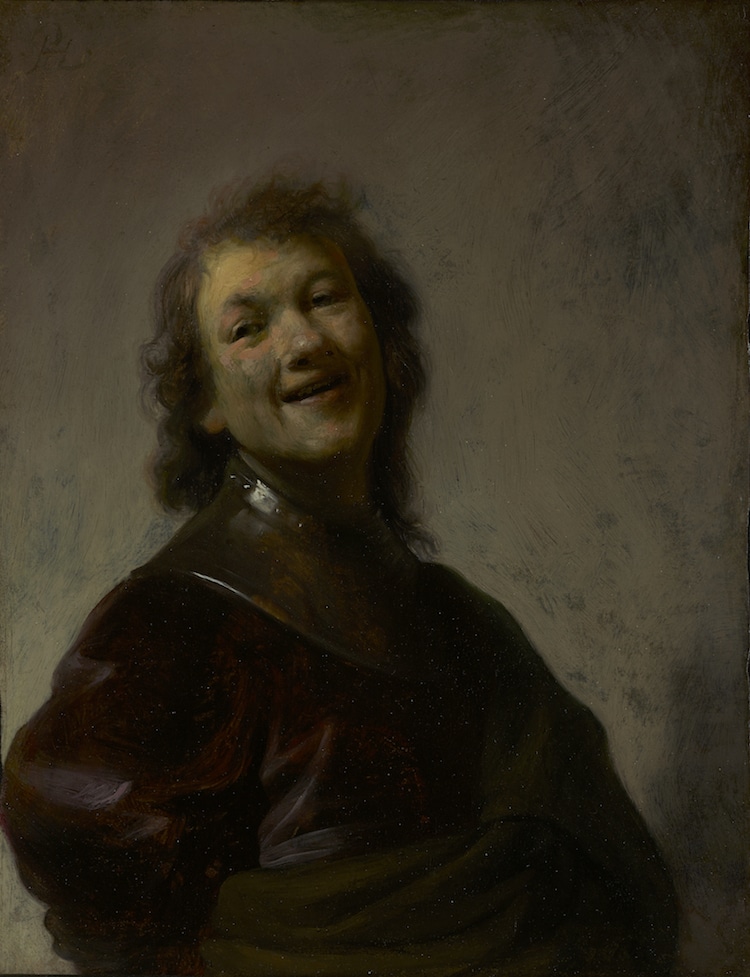
Rembrandt, “Rembrandt Laughing,” 1628 (Photo: Getty Center via Wikimedia Commons, Public domain)
Made when Rembrandt (1606 – 1669) was about 22 or 23, this oil-on-copper painting is one of the artist's earliest self-portraits and tronies. It captures him in a moment of giddiness as his face is tilted back in laughter.
Wide-Eyed Self-Portrait, 1630
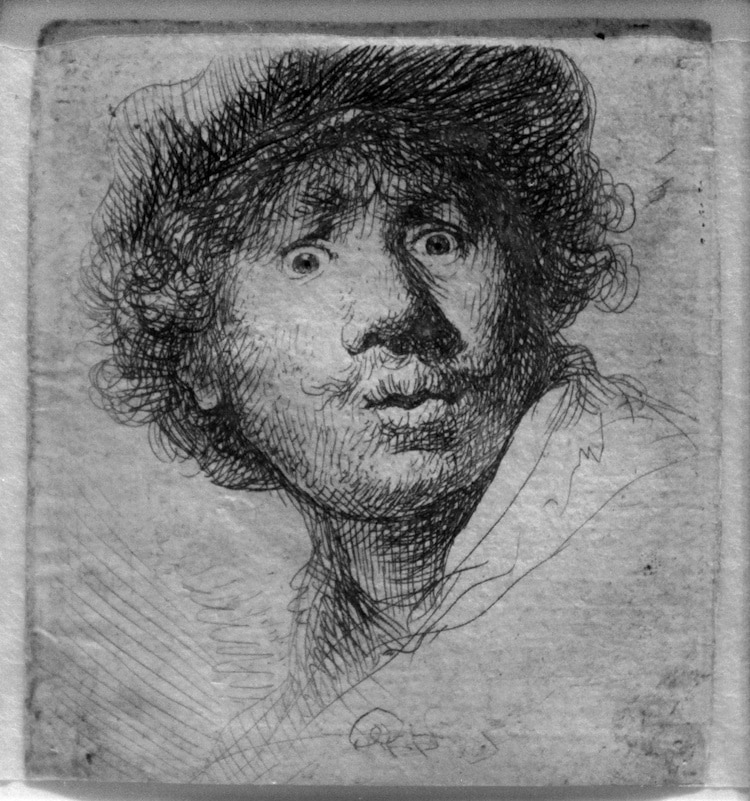
Rembrandt, “Wide-Eyed Self-Portrait,” 1630 (Photo: Germanisches Nationalmuseum via Wikimedia Commons, Public domain)
This etching is one of five pieces that have been dubbed Studies in Expression by Dutch art historian Ernst van de Wetering. It differs from a tronie due to the speed at which it was made and the lack of elaborate detail. In this piece, Rembrandt stares directly at the viewer with wide eyes and slightly parted lips.
Self-Portrait at the Age of 34, 1640
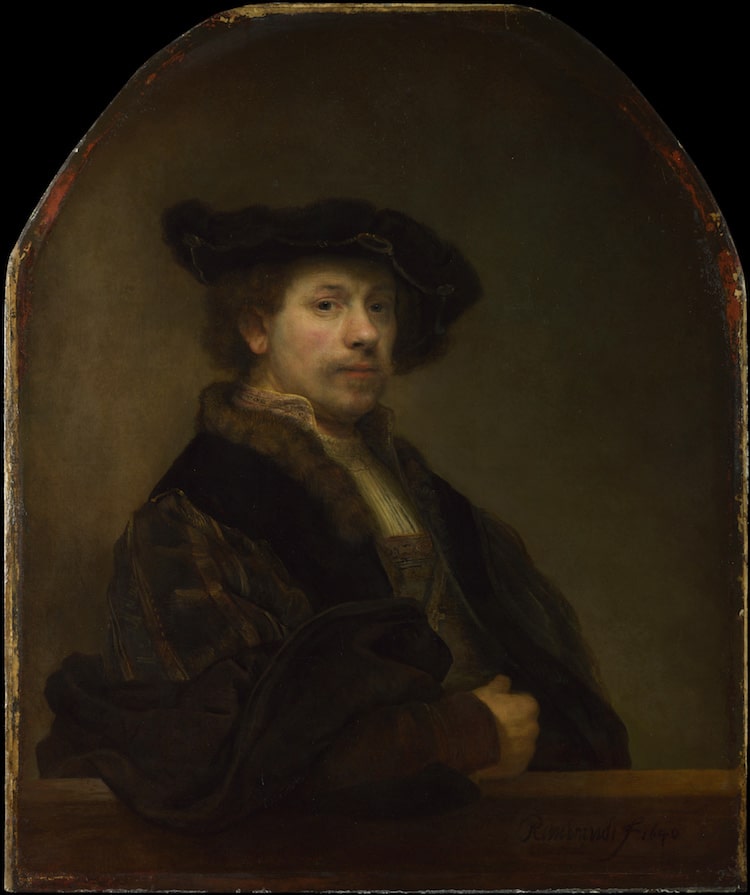
Rembrandt, “Self-Portrait at the Age of 34,” 1640 (Photo: National Gallery via Wikimedia Commons, Public domain)
Self-Portrait at the Age of 34 depicts the artist in a lavish costume from the 1500s. The pose of Rembrandt resting one arm on a ledge recalls two Renaissance paintings: Portrait of Baldassare Castiglione by Raphael and A Man with a Quilted Sleeve by Titian. Like many of his other canvases, the artist stares unabashedly at the viewer, confident in himself as an artist.
Self-Portrait with Beret and Turned-Up Collar, 1659

Rembrandt, “Self-Portrait with Beret and Turned-Up Collar,” 1659 (Photo: National Gallery of Art via Wikimedia Commons, Public domain)
At the time this painting was made, the artist was already struggling with the financial issues that plagued his later years. The effects of these stressors can be seen in the solemn atmosphere of the portrait, the dark choice of colors, and especially the expression of concern on Rembrandt's face. Here, he also uses a similar pose from some of his earlier portraits, once again recalling the Renaissance masters.
Self-Portrait with Two Circles, 1665-9
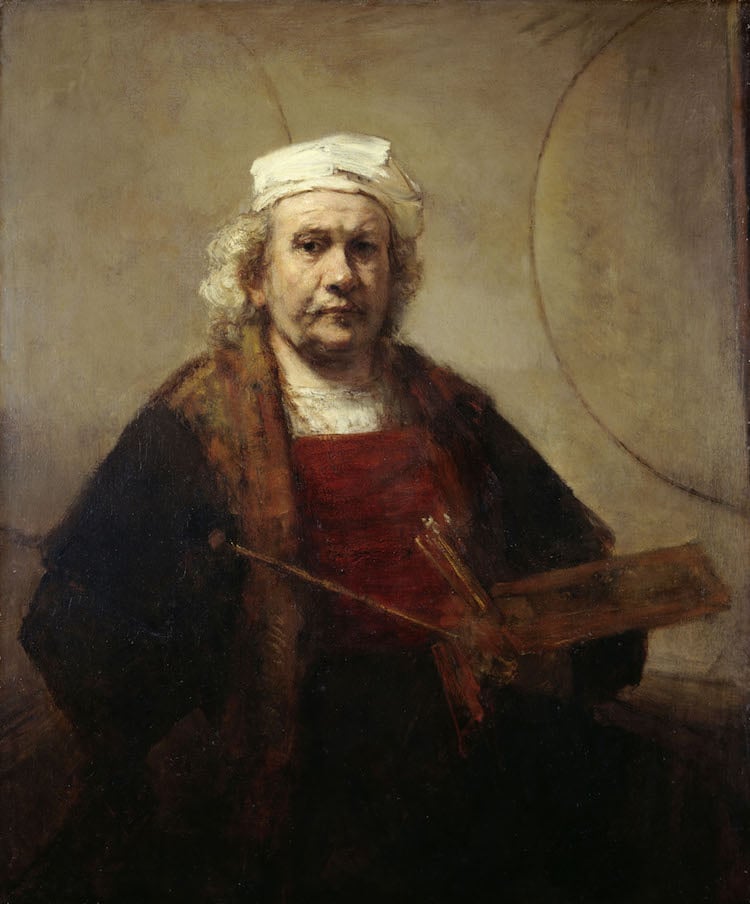
Rembrandt, “Self-Portrait with Two Circles,” 1665-9 (Photo: Kenwood House via Wikimedia Commons, Public domain)
As Rembrandt aged, his self-portraits became more serious and self-reflective in nature. This particular painting stands apart from his other late self-portraits for its unusual and striking background with two drawn circles—the meaning of which remains uncertain. One theory is that they are a demonstration of his artistic skill, like the story of Giotto drawing a perfect circle in front of the Pope. Another suggests that it is supposed to resemble an old map of the world, which was a common feature in Dutch paintings of the same time period.
Self-Portrait at the Age of 63, 1669
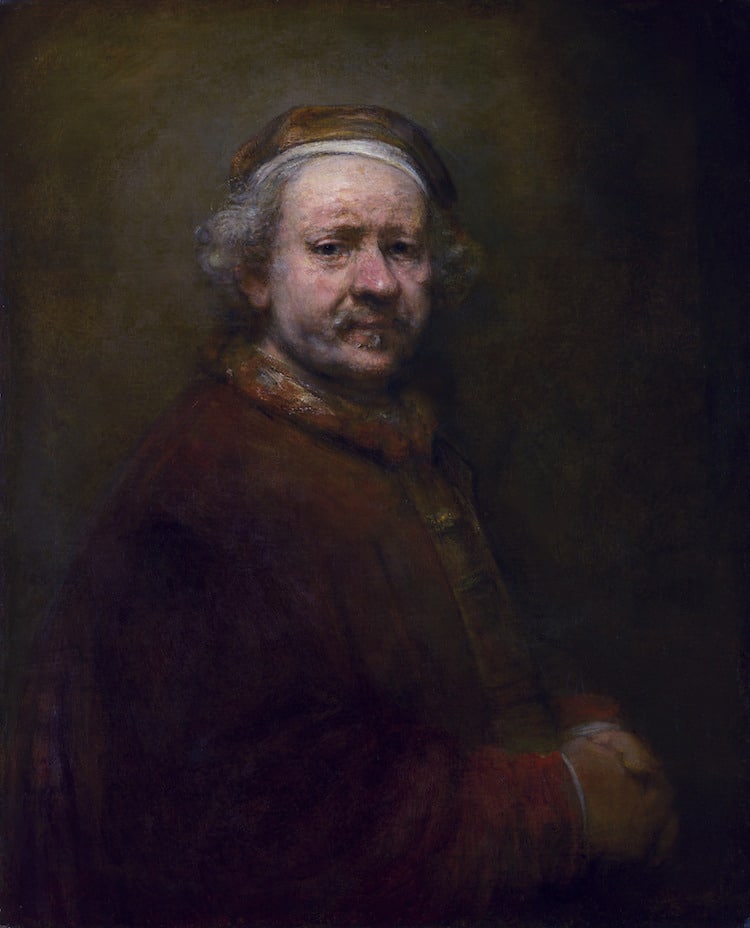
Rembrandt, Self-Portrait at the Age of 63, dated 1669 (Photo: The National Gallery via Wikimedia Commons, Public domain)
This painting is one of three that are dated the year Rembrandt died. It depicts the artist with the same gravity expected in his final work, with a grim, but confident expression and loose brushstrokes. Here, we can see his hands clasped in front of his body—a pose which he often avoided since he used a mirror to capture his likeness.
Related Articles:
Uncover the History Behind Rembrandt’s Masterpiece Painting ‘The Night Watch’
15 of the Greatest Painters of All Time Whose Influences Live On Today
28 Iconic Artists Who Immortalized Themselves Through Famous Self-Portraits











































































